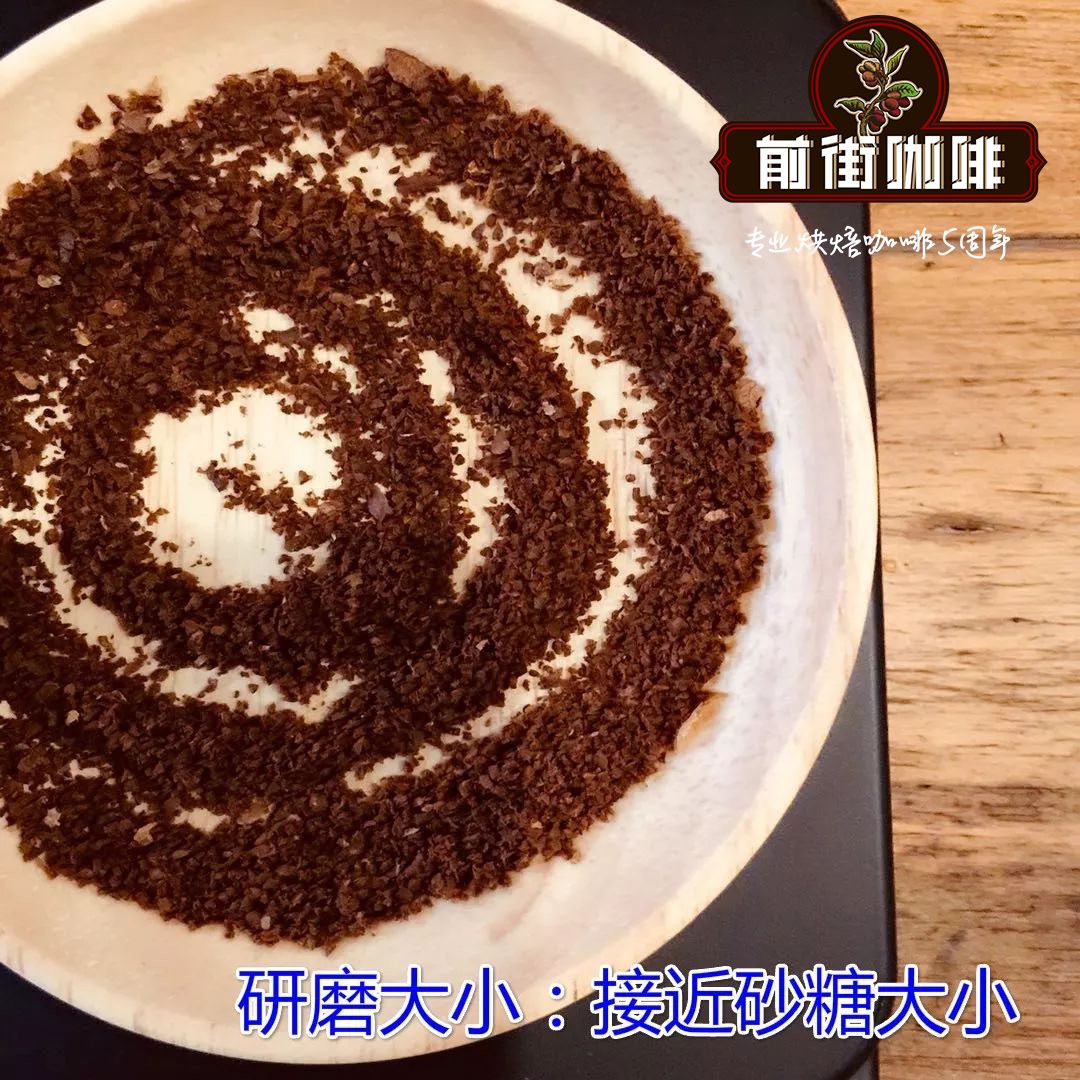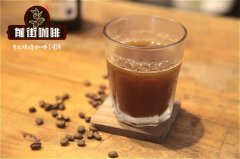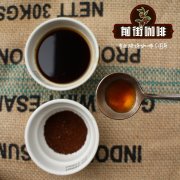How to roast Brazilian red bourbon_Hand brewed red bourbon coffee beans tutorial_How much does a cup of red bourbon coffee cost

Professional coffee knowledge exchange more coffee bean information please follow the coffee workshop (Wechat official account cafe_style)
Introduction to the origin of red bourbon coffee beans
The hilly woodland where South Minas is 700m-1200m above sea level is the earliest production area of Brazilian coffee. Due to the increase in labor costs, it is now mostly harvested by machinery, and it is also the earliest commercialized area of coffee. We can see that many large exporters are also standing here. Bahia, located in the north of Brazil, mainly produces washing in Brazil, and Espiritu Santo, near the sea, is the main export area of Brazilian Robusta varieties.
There are mainly two kinds of topography in Brazil, one is the Brazilian plateau above 500 meters above sea level, and the other is the Brazilian plain below 200 meters above sea level. The main cultivated and well-known variety is bourbon (including yellow bourbon, red bourbon, Pingdou Shan du Shi). The taste of Brazilian coffee is mainly characterized by low acidity, nutty flavor, balanced and moderate thickness. In the world of boutique coffee, Brazilian coffee is not outstanding, but Brazilian coffee is often used as a blending variety in Italian coffee. Because of the high degree of balance, it is often used by merchants as blue mountain flavor beans.
Bourbon species
Tell me briefly what bourbon is. Bourbon coffee was originally grown on the island of Reunion, which was also known as le Bourbon before 1789. Bourbon, the second species caused by the Typica mutation, is the oldest coffee variety in existence, and the green fruit appears bright red when it is ripe.
After the red bourbon general coffee tree blossoms and bears fruit, the color change of the coffee fruit is: green > turn yellowish > turn slightly orange > turn mature red > turn more ripe dark red, so some people also call it [red bourbon], in fact, red bourbon, that is, what we call bourbon species. Bourbon planted at high altitude usually has a better aroma, while the acid is brighter and even tastes like red wine.
Generally speaking, bourbon is a coffee tree that belongs to a branch of Arabica species, generally bearing red fruit, called red bourbon, in addition to yellow bourbon, orange bourbon, yellow bourbon relatively low yield, but better quality.
The propagation route of bourbon species
Introduced to Brazil in 1727 because of its low yield and easy to interfere with diseases, the bourbon species was introduced to Brazil around 1860 via Campinas in the south and rapidly expanded northward to other parts of South and Central America. In Latin America today, although most of the bourbon species have been basically replaced by their varieties (especially Caturra,Catuai and Mundo Novo, etc.), bourbon is still grown in El Salvador, Guatemala, Costa Rica, Peru and other countries.
In Africa, French missionaries known as Spiritan (from the Holy Spirit) played an important role in the spread of the bourbon species. The first church was founded in Reunion in 1841 and a branch was established in Zanzibar in 1859, while from Zanzibar, a branch was established in Bagamoyo (Bagamoyo, coast of Tanzania, then known as Tanganyika) and St. Augustine (Kikuyu, Kenya) in 1862, and a branch was established in Bura (Taita Hills, Kenya) in 1893. The establishment of each chapter was accompanied by the planting of coffee seeds from Reunion.
Seedlings cultivated by Bura in 1899 were brought to another French church in Santa Cruz (near Nairobi), introduced to the Kilimanjaro region of Tanzania in 1900, and distributed seeds to local residents who were willing to grow coffee. This is the origin of the so-called "missionary bourbon". Then the Kent species was introduced in 1920. Therefore, up to now, the coffee in Tanzania is mainly bourbon and Kent.
-- French Territory Bourbon Island
-- pointed Bourbon to New Caledonia Yemen in 1860
-- 1732 round bourbon to the British dependency St. Helena Island.
-- round bourbon to Brazil in 1860.
-- round bourbon to Rwanda, Kenya, Tanzania in 1900
Sharp Bourbon to Colombia after 2000.
03 | introduction to the handling method
Semi-washing method
After picking coffee cherries, remove the immature fruit and foreign body through the sink, remove the skin and part of the pulp, and then use the pectin machine to remove the mucous membrane. The removal of mucous membrane helps to reduce the required sun drying time and reduce the risk of fermentation. This method is often used when the climatic conditions are not so ideal. If the air humidity is high, the climate is warm or there is rain, then there is a risk of mildew in the drying process. As a result, most of the washed beans used in commodity trade in Brazil are processed by semi-washing.
Analysis of Red Bourbon Coffee Bean
There are many kinds of coffee in Brazil, which are mainly treated by solarization, which are classified according to the name of the state of origin and the port of transport.
Due to the scattered origin and uneven quality, the classification standards are not unified:
The Brazilian grading system, which scores the proportion, size, flavor and taste of defects, is its own independent grading system, which is more complex than that from other countries. For example, "Brasil Santos, NY2 SC17/18 SS FC", NY2 classifies the proportion of defects: the higher the number, the greater the proportion of defects. The order is 2, 2, 3, 3, 3, 4... NY says it is based on the New York rating standard.
SC 17A 18 represents the number of coffee beans. While SS FC (Strictly Soft and Fine Cup) represents flavor and taste, it is divided into two groups: first Strictly Soft, Soft, Softish, Hard, Hardish, Rioy/Rioysh, Rio second is Fine Cup and Good cup. Brazilian coffee is widely loved because of its high sweetness, cleanliness, softness, low acid value and wide use.
Brazil Red Bourbon
[country] Brazil Barsil
Red bourbon, Red Bourbon
[treatment] hand extraction, followed by half-sun treatment
[place of origin] South Minas
[altitude] 700m-1200m
[treatment method] semi-washing
[flavor] High sweetness, clean, supple, low acid value, tropical fruit aroma.
04 | Baking analysis
Brazilian coffee generally grows at an altitude of 1000-1300 meters above sea level, so its density is relatively low, the water content is moderate, the bean quality is soft, and the thickness from the bean surface to the bean core is thin, so it is not suitable for baking at too high temperature, so there will be a bitter taste. We choose the method of throwing beans over medium heat to keep the firepower to the dehydration stage, and fine-tune the caramelization reaction with the increase of temperature after the first explosion, which makes the caramelization reaction more fuller. After the semi-water washing and explosion, the temperature rises slowly, and the beans can be dropped when the second explosion is near.
Roaster Yangjia 600g semi-direct fire
The furnace temperature is preheated to 200 degrees Celsius, fire is fired after the throttle is set at 3J30s, the firepower is adjusted to 160, the throttle is unchanged, the temperature recovery point is 30, keep the firepower, the grass smell disappears, the firepower is reduced to 130, and the throttle is opened to 4. At 168 degrees, the firepower was reduced to 100 again.
After dehydration, the bean surface appears wrinkled and black markings, and the taste of toast changes to coffee, which is a prelude to an explosion. Listen to the sound of an explosion. At 8: 00, 39: 00, 50 starts to explode, and all the throttle doors are open. After an explosion, the development time is 3 minutes and 10 seconds, and when it reaches 190C, the firepower drops to 50194 degrees, then to 30 degrees, and then to about 200degrees.
This is a flavor-balanced coffee with a typical Brazilian coffee style. The flavor of nuts and chocolate is outstanding and the acidity is low.
Brewing data of red bourbon coffee beans
Recommended cooking method: hand flushing
Degree of grinding: 4 (Fuji R440)
Water temperature: 89 °C
V60 filter cup, 15g powder, water temperature 90-91 degrees, grinding 3.5.The ratio of water to powder is close to 1:15
Steaming in 30 grams of water for 30 seconds
Segment: water injection to 120ml cut off, slow water injection to 225ml
That is, 30-120-75, the total extraction time is 2 minutes.
Other suggestions for trickling extraction:
Normal pressure, recommended grinding degree of 3.5-4 / water temperature 90 °C
Philharmonic pressure, recommended 2.5 grinding degree, water temperature 90 °C
Brand recommendation of Red bourbon Coffee beans
The Brazilian red bourbon beans roasted on Qianjie Coffee are fully guaranteed in brand and quality. And more importantly, the performance-to-price ratio is extremely high, a pack of half a pound 227 grams, the price is only about 45 yuan. According to the calculation of 15 powders per cup of coffee, 15 cups of coffee can be made in a bag, which costs only about 3 yuan per cup, which is very cost-effective for coffee shops to sell dozens of yuan a cup.
Qianjie coffee: Guangzhou bakery, the store is small but a variety of beans, you can find a variety of unknown beans, but also provide online store services. Https://shop104210103.taobao.com
Important Notice :
前街咖啡 FrontStreet Coffee has moved to new addredd:
FrontStreet Coffee Address: 315,Donghua East Road,GuangZhou
Tel:020 38364473
- Prev

Price comparison of Brazilian Red bourbon and Yellow bourbon Coffee _ relationship between Bourbon Coffee and Kenya Coffee
Professional coffee knowledge exchange more coffee bean information please pay attention to the coffee workshop (Wechat official account cafe_style) bourbon species, is the second species of Typica mutation, and tin card is the oldest existing coffee variety, the green fruit will appear bright red when ripe. Compared with the tin card species, the bourbon species have wider leaves and denser growth.
- Next

Colombian Bourbon Coffee Bean characteristic Flavor Development Story and Price Baking suggestion
Professional coffee knowledge exchange more coffee bean information please follow the coffee workshop (Wechat official account cafe_style) before introducing the pink bourbon, let's briefly popularize what bourbon coffee is (here I borrowed the introduction of du Niang). Bourbon coffee (French: Caf Bourbon) is a kind of coffee produced by growing coffee trees in bourbon cultivation of Arabica coffee. Bourbon coffee
Related
- Detailed explanation of Jadeite planting Land in Panamanian Jadeite Manor introduction to the grading system of Jadeite competitive bidding, Red bid, Green bid and Rose Summer
- Story of Coffee planting in Brenka region of Costa Rica Stonehenge Manor anaerobic heavy honey treatment of flavor mouth
- What's on the barrel of Blue Mountain Coffee beans?
- Can American coffee also pull flowers? How to use hot American style to pull out a good-looking pattern?
- Can you make a cold extract with coffee beans? What is the right proportion for cold-extracted coffee formula?
- Indonesian PWN Gold Mandrine Coffee Origin Features Flavor How to Chong? Mandolin coffee is American.
- A brief introduction to the flavor characteristics of Brazilian yellow bourbon coffee beans
- What is the effect of different water quality on the flavor of cold-extracted coffee? What kind of water is best for brewing coffee?
- Why do you think of Rose Summer whenever you mention Panamanian coffee?
- Introduction to the characteristics of authentic blue mountain coffee bean producing areas? What is the CIB Coffee Authority in Jamaica?

